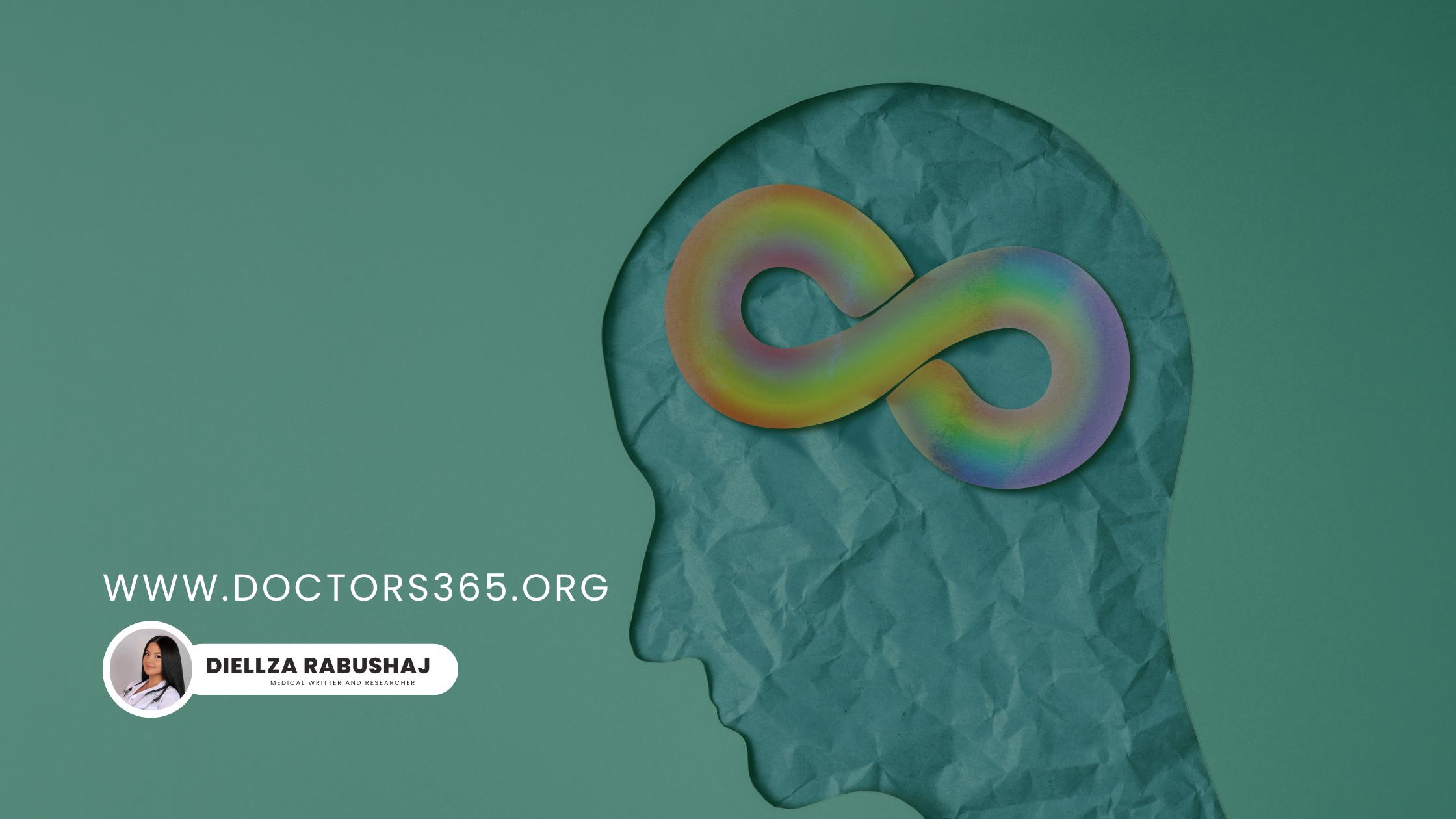
Mental Health & Psychiatry
Diagnosing Autism
Telemedicine and Its Pivotal Role in Diagnosing Autism
This in‑depth guide focuses on how Doctors365.org—a trusted online doctor service—leverages telemedicine to accelerate and improve autism diagnosis for families everywhere.
Telemedicine and Its Pivotal Role in Diagnosing Autism
Introduction
Ever wondered why some parents wait months—sometimes years—before they get a formal autism diagnosis for their child? Autism Spectrum Disorder (ASD) is a neuro‑developmental condition marked by challenges in social communication and restricted, repetitive behaviors. The Centers for Disease Control and Prevention reports that roughly 1 in 36 children in the United States is now identified with ASD (1). Early detection leads to earlier intervention, which can profoundly improve language, cognitive, and social outcomes. Yet traditional face‑to‑face pathways are famously slow.
That’s where Doctors365.org steps in. Our secure telemedicine platform connects you with certified pediatric neurologists, developmental pediatricians, and behavioral specialists—fast‑tracking assessments directly into your living room.
Telemedicine 101
What Exactly Is Telemedicine?
The World Health Organization defines telemedicine as “the delivery of healthcare services, where distance is a critical factor, by all healthcare professionals using information and communication technologies” (2). Think video calls, encrypted messaging, and AI‑powered analysis—the digital Swiss‑army knife of healthcare.
How Doctors365.org Bridges Care Gaps
- No travel stress. Hop onto a video call instead of driving hours to a specialist.
- Flexible scheduling. Evening and weekend slots fit around school and work.
- Instant specialist access. A click connects you with board‑certified experts, regardless of your zip code.
It’s like having a multidisciplinary clinic in your pocket—minus the waiting‑room magazines.
Historical Barriers to Early ASD Diagnosis
Specialist Shortages & Long Wait‑Lists
Before telehealth, families could wait 6–18 months for an evaluation slot—especially in rural regions (3). That delay steals precious early‑intervention months when a young brain is most malleable.
Geographic & Socio‑Economic Obstacles
Rural families often traveled hundreds of miles. Low‑income families faced missed workdays, fuel costs, or childcare hurdles. Doctors365.org slices through these barriers like a hot knife through butter.
How Doctors365.org Transforms Autism Screening
Online Developmental Screeners
- M‑CHAT‑R/F: Parents complete this 20‑item questionnaire on the Doctors365.org dashboard. Auto‑scoring flags at‑risk toddlers with 95% sensitivity and 85% specificity (4).
- SORF: Upload a short parent–child interaction video; trained analysts code red‑flag behaviors with proven reliability (5).
AI‑Enhanced Video Analysis
Our platform integrates Cognoa and NODA APIs. Parents record daily routines; machine‑learning algorithms highlight subtle social‑communication cues. Studies show up to 0.90 sensitivity and 0.85 specificity (6,7).
Wearables & Speech‑Capture Integration
Doctors365.org syncs with the LENA recorder—quantifying adult–child conversational turns. Lower vocal turn‑taking can hint at communication delays before age two (8).
Virtual Comprehensive Assessments
Tele‑ADOS & Tele‑CBE
Our clinicians guide caregivers through ADOS‑2 tasks via video, using household items as props. Validation studies report >80% agreement with in‑person ADOS scores (9).
Reliability Benchmarks
A 2022 systematic review of 26 tele‑diagnostic studies found sensitivities 0.70–1.0 and specificities 0.38–1.0, depending on tool and age group (10). Virtual pathways are now rivalling clinic performance.
Applied Behavior Analysis (ABA) Goes Digital
Parent‑Mediated Tele‑ABA on Doctors365.org
Board‑Certified Behavior Analysts coach parents live—demonstrating reinforcement techniques, role‑playing, and sharing data sheets in real time.
Evidence from RCTs
Marino et al. found tele‑coaching delivered equal behavior gains and lower parental stress compared with in‑person sessions (11).
Real‑World Success Stories with Doctors365.org
Pivoting During COVID‑19
When clinics closed, Doctors365.org diagnoses kept flowing. Median wait‑time dropped from 132 to 59 days without sacrificing accuracy (12).
Rural Families Finally Get Answers
A family in Appalachia completed an entire diagnostic work‑up—including Tele‑ADOS—over mobile broadband. They saved a 260‑mile round trip and weeks of stress.
Technology Toolkit Inside Doctors365.org
- HIPAA‑compliant Video Visits
- Integrated EMR & e‑Prescribing
- Cloud‑Based Assessment Suite (M‑CHAT, Vineland‑3, Tele‑ADOS)
- TLS 1.3 Encryption & MFA safeguard your data
Engaging Parents & Caregivers Virtually
Coaching Techniques Over the Platform
- Screen‑share visual schedules, token boards, and progress charts
- Use real‑time annotation to highlight cues
- Breakout rooms for parent training and child observation
Building Trust Through Screens
Position the webcam at eye level, maintain warm facial expressions, and narrate actions (“I’m jotting down milestones”). These micro‑behaviors replicate the comforting cues of an in‑office visit.
Telemedicine Economics
Health‑System Savings
Mayo Clinic data show virtual evaluations cost 18% less per patient when factoring facility overhead (13).
Reduced Out‑of‑Pocket Costs
A 2021 NIH‑funded cost‑utility analysis estimated tele‑diagnosis saved families US $635 in travel and wage losses per assessment (14).
Pandemic Acceleration & Policy Shifts
Telehealth Waivers That Became Permanent
The AMA and CMS relaxed cross‑state licensure and reimbursement rules in 2020—many are now codified, fueling tele‑ASD growth (15).
Global Guidelines from WHO & AMA
Both bodies endorse tele‑assessment pathways for developmental disorders when in‑person care is impractical, provided tools are validated and families have broadband (2,15).
Ethical & Equity Considerations
Bridging the Digital Divide
About 14% of U.S. households lack high‑speed internet. Doctors365.org partners with libraries and schools to provide private tele‑health kiosks.
Safeguarding Data & Consent
We obtain explicit tele‑consent, outline data‑storage practices, and clearly explain how recordings are used.
Future Horizons
Machine‑Learning Diagnostics
Next‑gen algorithms mine eye‑tracking and micro‑gesture patterns, promising sub‑five‑minute screeners with >95% accuracy.
Virtual Reality Social‑Skills Clinics
Imagine your child practicing conversation inside a VR playground—therapist avatars guiding each step. Pilot studies show promising generalization to real‑world settings.
Conclusion
Telemedicine isn’t merely a pandemic stop‑gap; it’s a paradigm shift that places families at the center of autism care. Doctors365.org combines validated digital tools, real‑time coaching, and AI‑powered insights to deliver faster, fairer, and more personalized diagnoses.
Ready to take the next step? Visit Doctors365.org now or book an online consultation to start your tele‑diagnostic journey.
FAQs
1. Is a virtual autism diagnosis on Doctors365.org really accurate?
Yes. Tele‑assessments reach up to 0.90 sensitivity and 0.85 specificity compared with in‑person gold standards (10).
2. What equipment do I need at home?
A laptop or tablet with a camera, stable internet (>5 Mbps), and a quiet, well‑lit room.
3. Will insurance cover tele‑diagnosis?
Most major insurers—including Medicaid in many states—now reimburse tele‑ASD evaluations at parity with in‑person visits. Coverage specifics vary, so check your individual plan or contact our billing team at Doctors365.org.
4. Can therapy also be delivered online after the diagnosis?
Absolutely. Doctors365.org offers tele‑ABA, speech‑language therapy, and occupational therapy modules. Studies show virtual interventions yield comparable gains to clinic‑based sessions while fitting better into daily family routines (11).
5. Is my child’s data secure on Doctors365.org?
Yes. We use end‑to‑end encryption, multifactor authentication, and HIPAA‑compliant servers. Your videos and health records are stored securely and are accessible only to authorized clinicians.
References
- Centers for Disease Control and Prevention. Prevalence of Autism Spectrum Disorder Among Children Aged 8 Years—Autism and Developmental Disabilities Monitoring Network, 11 Sites, United States, 2020.
- World Health Organization. Telemedicine: Opportunities and Developments in Member States. 2010.
- Liu M, Ma Z. Telehealth screening, assessment, and diagnosis of autism spectrum disorder: a systematic review. Child Adolesc Psychiatry Ment Health. 2022;16:79.
- Abbas H et al. Machine learning for early autism detection via Cognoa. npj Digit Med. 2021.
- Dow D et al. The Systematic Observation of Red Flags (SORF) for autism spectrum disorder. Autism. 2020.
- Smith CJ et al. NODA smart capture: a pilot telehealth tool for autism diagnosis. Telemed J E Health. 2020.
- Oller DK et al. Automated vocal analysis of children with ASD. Proc Natl Acad Sci USA. 2019;116:10726‑10731.
- Reese RM et al. Preliminary evaluation of the tele‑ADOS. Autism. 2021.
- Marino F et al. Tele‑assisted behavioral intervention for families with ASD: RCT results. Brain Sci. 2020;10(9):649.
- Mayo Clinic Telehealth Economic Report. 2023.
- National Institutes of Health Cost‑Utility Study on Tele‑ASD. 2021.
- American Medical Association. 2023 Telehealth Policy Updates.
Written by Diellza Rabushaj, Medical Writer & Researcher.
Recommended articles for You

Guide to AI-assisted ADHD care and online psychiatry via Doctors365, blending ChatGPT with human expertise.

In-depth guide to depression, anxiety and telemedicine in Europe

Allergic rhinitis explained and treated online via Doctors365 telemedicine.